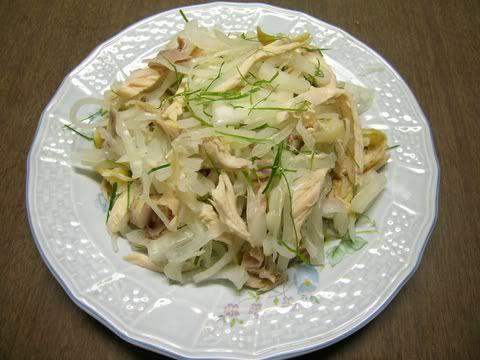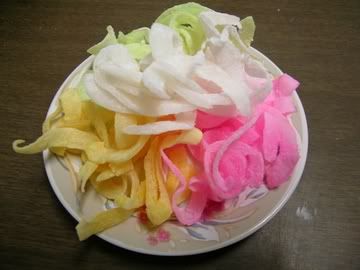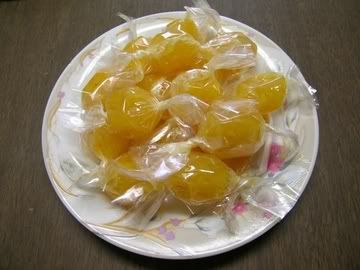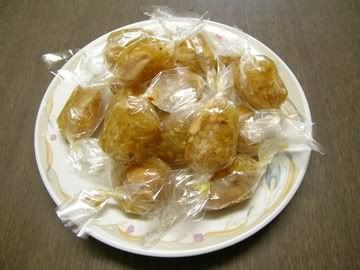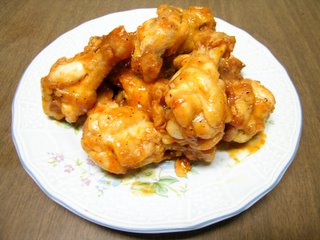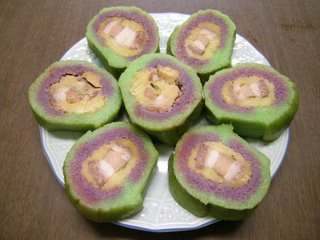 A “must have” for Tat; there are many versions of Bánh Tét from sweet to savory. This is the Buddhist style vegan version made especially for enjoying on the first day of tết. Ingredients:
A “must have” for Tat; there are many versions of Bánh Tét from sweet to savory. This is the Buddhist style vegan version made especially for enjoying on the first day of tết. Ingredients: -5lbs sweet rice (glutinous rice)
-2lbs mung beans (peeled and split)
-1-2lbs banana leaves
-pandan leaves or
extract-lá cẩm leaves or violet color
-salt, sugar, pepper
-2 cans
coconut milk (800ml total)
-
vegetarian meat -3 tbs soy sauce
Getting Ready: Cut meat into thin strips and marinate with soy sauce, pepper, some sugar, salt, and a hint of 5 spice.
Cut leaves into approximately pieces that are approximately 12-15 inches.
Wash and wipe dry.
Wash and soak rice in water for a few hours.
Drain and divide rice into 2 portions, add pandan juice or extract into one portion.
Add lá cẩm juice or violet color into the other portion.
Stir fry the rice separately (by color) while gradually adding coconut milk until “sticky”.
Wash, soak, cook, and mash mung beans, add salt, sugar, and pepper to taste.
Take a strip of “meat” and wrap with the prepared mung beans.
The wrap with a layer of violet rice.
Assembling the Rice Cakes: Layer a few layers of banana leaves on a flat surface; make sure the leaf grains are crisscrossed.
Layer green pandan rice onto the center of the leaves, add the ‘filling’ (prewrapped log of meat that was wrapped mung beans and violet rice).
Using both hands pull 2 edges of the leaves up to gather the rice around the ‘filling’, add more rice on top of necessary to entirely cover the filling log.
Fold the edges over each other to form a long log.
Carefully fold the edges of the other two sides over each other (like wrapping a present).
Tie with kitchen twine.
Boil for at least 5 hours; remove immediately remove and soak in cold water for a night.
Next morning remove from water wipe dry and let the cake age for a day before serving.
To Serve: Either serve as is with sugar or dưa món (veggies pickled in fish sauce) or fried with sugar and day món.
Note: The cake should be wrapped and tied tightly to ensure the final result will not be “soggy”.
However, if wrapped or tied too tightly, the cake might not be cook fully (the rice won’t have room to “expand”).
If you have never made bánh tét before I suggest working with only one color of rice for the ‘experience’ as wrapping is one of the hardest and most important part of making bánh tét.
Other versions include: Sweet mung beans: Omit meat, mix beans with sugar to taste.
Non-vegan (with real meat):Use pork belly and marinate with fish sauce, garlic, shallots, pepper, and a hint of 5 spice powder.
Banana: Add boiled black beans to the rice.
Marinate banana with a little sugar for a few hours before wrapping.
***Because my vegetarian dishes are prepared with “Buddhist Laws” in mind; besides not using meats and animal products, I do not use garlic, onions, leeks, chives, or any type of alcohol. However, if your main goal in being vegan cooking is to just avoid meats, feel free to add the any of the mentioned above to spice up you dishes.***
 Besides all of the sweets, we need consume savory dishes to “balanced” out the yin and the yang right? By tradition, my family are Buddhist vegans on the first day of new years. This means no only meats and animal products are a no no but garlic, onions, chives, leeks are also not acceptable. Although it might seem next to impossible to cook anything savory and tasty without the ingredients mentioned above it’s actually not that hard….once you get the hang of it. Just think creatively and anything is possible. So here are the vegan dishes we enjoy on first day.
Besides all of the sweets, we need consume savory dishes to “balanced” out the yin and the yang right? By tradition, my family are Buddhist vegans on the first day of new years. This means no only meats and animal products are a no no but garlic, onions, chives, leeks are also not acceptable. Although it might seem next to impossible to cook anything savory and tasty without the ingredients mentioned above it’s actually not that hard….once you get the hang of it. Just think creatively and anything is possible. So here are the vegan dishes we enjoy on first day.  Recipe
Recipe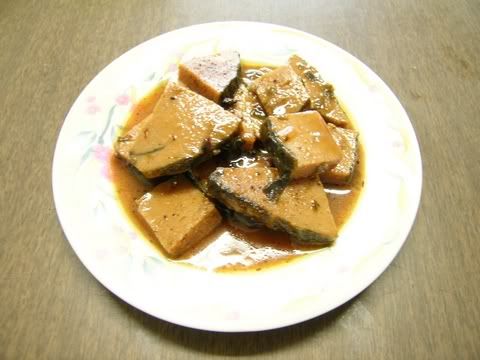 Recipe
Recipe Recipe
Recipe Recipe
Recipe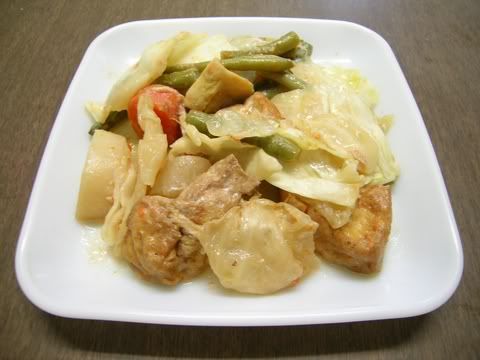 Recipe
Recipe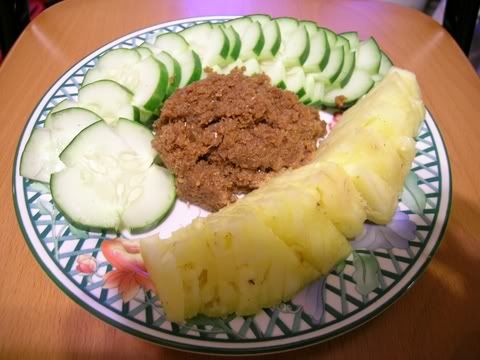
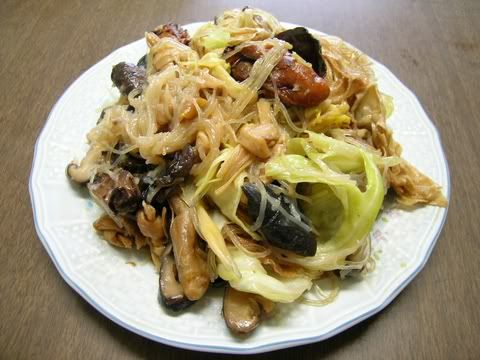 Recipe
Recipe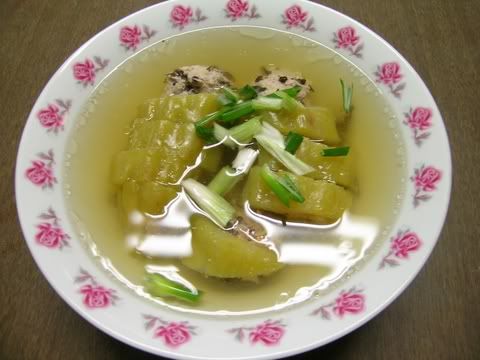 Recipe
Recipe Recipe
Recipe Recipe
Recipe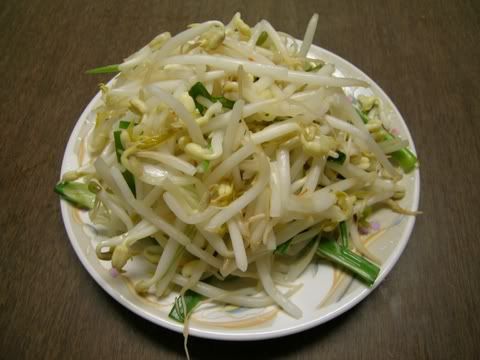 Recipe
Recipe
